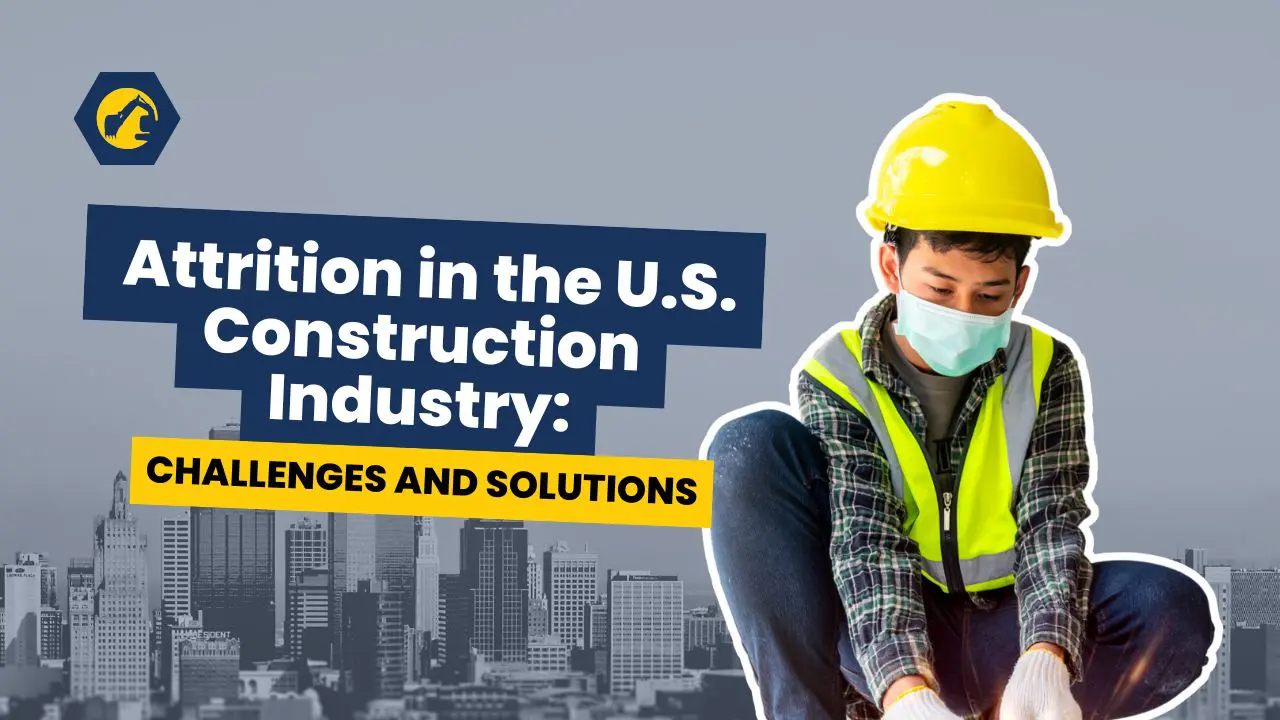
The U.S. construction industry is grappling with increasing workforce attrition, which poses significant threats to project schedules, productivity, and long-term growth. Understanding the root causes of attrition—and how to respond—is essential to ensuring a sustainable construction workforce.
Current Workforce Shortages
In 2024, the U.S. construction industry required an additional 501,000 workers on top of normal hiring just to meet demand. Looking ahead to 2025, the industry is projected to need another 454,000 workers, even under the assumption that construction spending slows (ABC, 2024).

Contributing Factors to Attrition
- Aging Workforce
Over 20% of construction workers are aged 55 or older, leading to a wave of retirements that strip the industry of institutional knowledge and skilled labor (ABC, 2024).
- Cross-Industry Movement
In 2024, an estimated 1.9 million construction workers are expected to leave the industry for other sectors, while around 2.1 million may enter from elsewhere. This reflects high workforce fluidity and instability (ABC, 2024).

- Economic Volatility
Fluctuations in interest rates and consumer confidence directly affect construction starts, which can influence job security and workforce attrition rates (ABC, 2024).
Impact on the Industry
Due to the labor shortage, the construction industry is experiencing historically low layoff rates—contractors are holding on to employees at all costs. However, this also leads to:
- Increased competition for skilled labor
- Rising project costs
- Delayed timelines

Solutions and Mitigation Strategies
Workforce Development
Organizations such as Associated Builders and Contractors (ABC) offer over 800 training programs ranging from craft and safety to management development. These aim to upskill new and current workers (ABC, 2024).
Immigration Policy Reform
ABC advocates for reforms in the legal immigration system to expand access to foreign labor in high-demand sectors like construction (ABC, 2024).
Inclusive Public Procurement
By advocating for inclusive contracting policies that allow all qualified contractors to compete, the industry can encourage broader workforce participation and reduce barriers to entry (ABC, 2024).
Conclusion
Attrition in the construction industry is driven by demographics, economic instability, and cross-industry transitions. But it’s not without solutions. Strategic investments in workforce development, smart policy changes, and a commitment to inclusivity can stabilize and grow the construction labor force for the future.
![49+ Employee Turnover Statistics and Trends [2025]](https://jobera.com/wp-content/uploads/2023/11/trurnover-rate-by-industry.jpg)
Sources:
- Associated Builders and Contractors (ABC), 2024 Construction Workforce Shortage Report. Link
- Buildertrend, Labor Shortage in Construction: 2023 Trends.
- Construction Executive, Trends & Challenges in the Industry, 2024.
- Work Institute, Employee Retention Report 2025.






